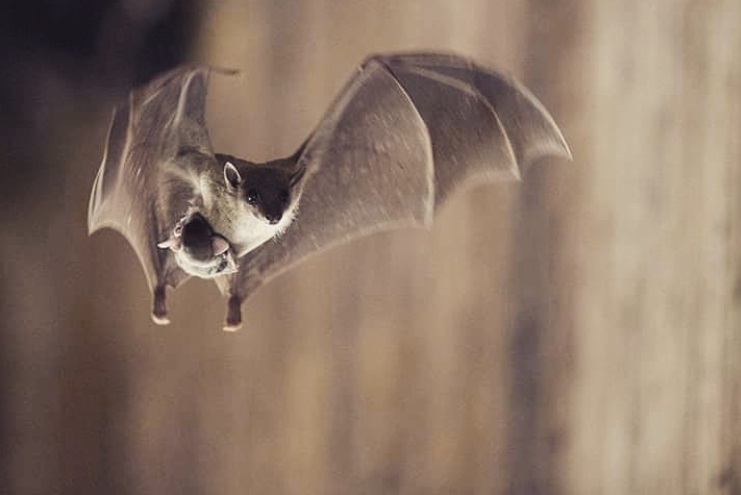36 years after, bats made themselves at home within the dark hallways of sand. 12 years subsequent to that, in 1970, mining no longer took place there and the cave became the full-time residence of those bats. Though, when the light shines in between the colourful pillars, you'll be drawn to stay a while yourself.
Piusa Caves Nature Reserve is the largest destination for bats in the Baltic region, if not all of Eastern Europe. In the caves, you can see seven species of bat: the northern bat (põhja-nahkhiir), brown long-eared bat (suurkõrv), Natterer's bat, whiskered bat (habelendlane), Brandt's bat, Daubenton's bat (veelendlane), and pond bat (tiigilendlane).
Northern bats are very round with a short nose. Brown long-eared bats almost look like they have the horns of a ram. Natterer's bats have wide, forward-protruding, almost dog-like ears. If you had a chance to look closely at the whiskered bat (don't count on it, though, as they're nocturnal) you can see just how fine their whiskers are. Daubenton's bats have thicker looking fur. These bats all have different proportions, ear and wing shapes, and other characteristics that you can ask about when you're there. Up to 3,000 bats have been counted, having come from far and wide, as much as 100 km away, to the sanctuary of the caves.
To see the cave when you visit, you'll have to pay for a tour, which will not only be a refresher on the background behind the cave, but also grant you access to the marked paths inside.
At the visitor centre, there are exhibitions from Tartu's AHHAA Science Centre and films screened about the history, flora, and fauna of the caves and their surrounding area. The visitor centre also offers the activity of making “sand bottles and sand cards” for guests who arrange this in advance.
Outside of the cave and visitor centre, you can go for a walk on a 1.4 kilometre marked trail. You can also see Piusa river, which the caves back out onto and which eventually flows into Lake Peipus. Paths in the area make for a possible cycling route.
The nature reserve itself doesn't allow for camping or campfires if you're thinking of staying close by. Though nearby, there is the Piusa Lõkkekoht (campfire site) where you can set up a tent. Mushroom picking and foraging are permitted within the reserve, making for another relaxing activity while you're there.
It takes roughly one hour and 20 minutes to reach the nature reserve from Tartu by car, and you can also get there by taking the R46 train (a one hour and 18 minute trip — Elron.ee has the latest train times) from Tartu to Koidula; then taking the 83C bus from Koidula for a short hop over to Piusa.
Piusa Caves are an interesting intersection between the natural and human worlds, with an interesting connection to Estonian glass-making.
Written by Vincent Teetsov, Toronto





